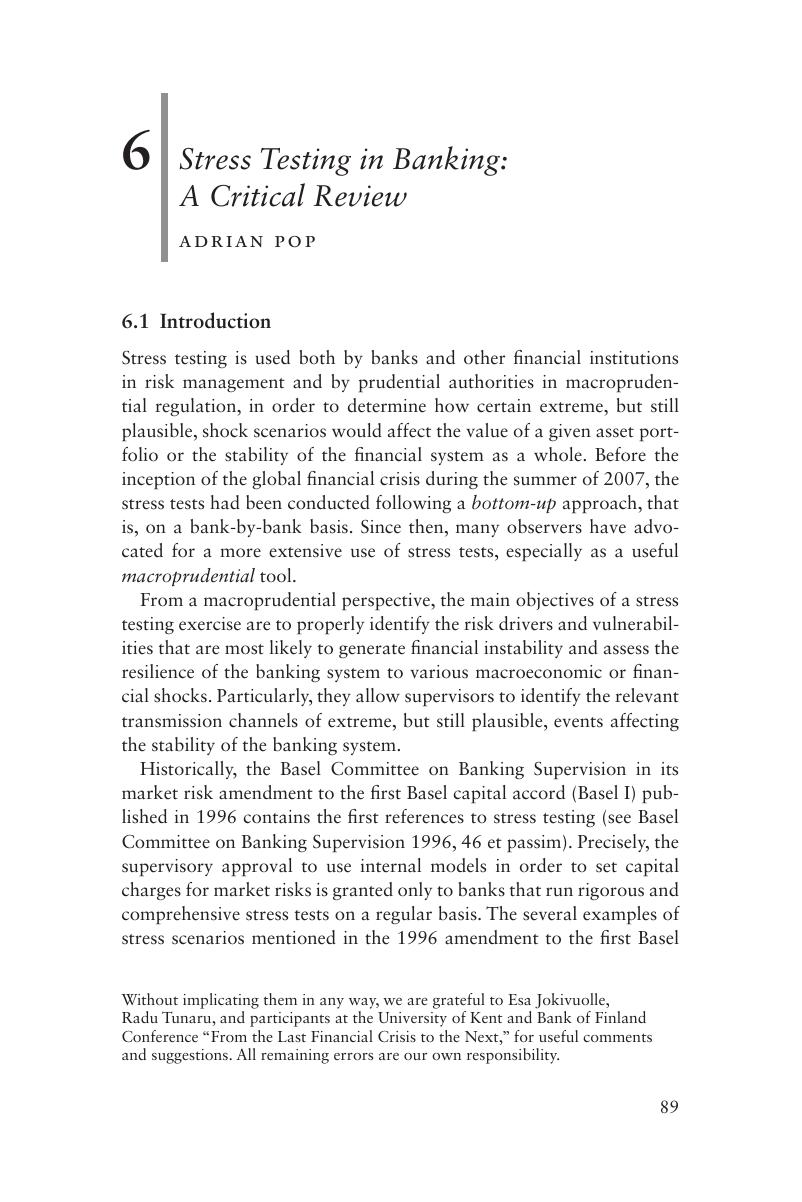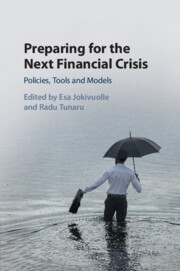Book contents
- Preparing for the Next Financial Crisis
- Preparing for the Next Financial Crisis
- Copyright page
- Contents
- Figures
- Tables
- Notes on Contributors
- Introduction
- 1 Non-Standard Monetary Policy and Financial Stability: Developing an Appropriate Macrofinancial Policy Mix
- 2 Financial Innovation and Financial Stability: An Introduction
- 3 Post-Crisis Changes in US Bank Prudential Regulation
- 4 Notes on the Interaction between Financial Markets and the Macroeconomy: Financial Markets and Policy through the Lens of Macroeconomics
- 5 Investment Doctrines for Banks, from Real Bills to Post-Crisis Reforms
- 6 Stress Testing in Banking: A Critical Review
- 7 Making Sense of the EU-Wide Stress Test – Comparing SRISK and the ECB/EBA Measures of Bank Vulnerability
- 8 The Role of Personality in Financial Decisions and Financial Crises
- 9 Model Apocalypto
- Index
- References
6 - Stress Testing in Banking: A Critical Review
Published online by Cambridge University Press: 10 November 2017
- Preparing for the Next Financial Crisis
- Preparing for the Next Financial Crisis
- Copyright page
- Contents
- Figures
- Tables
- Notes on Contributors
- Introduction
- 1 Non-Standard Monetary Policy and Financial Stability: Developing an Appropriate Macrofinancial Policy Mix
- 2 Financial Innovation and Financial Stability: An Introduction
- 3 Post-Crisis Changes in US Bank Prudential Regulation
- 4 Notes on the Interaction between Financial Markets and the Macroeconomy: Financial Markets and Policy through the Lens of Macroeconomics
- 5 Investment Doctrines for Banks, from Real Bills to Post-Crisis Reforms
- 6 Stress Testing in Banking: A Critical Review
- 7 Making Sense of the EU-Wide Stress Test – Comparing SRISK and the ECB/EBA Measures of Bank Vulnerability
- 8 The Role of Personality in Financial Decisions and Financial Crises
- 9 Model Apocalypto
- Index
- References
Summary

- Type
- Chapter
- Information
- Preparing for the Next Financial CrisisPolicies, Tools and Models, pp. 89 - 107Publisher: Cambridge University PressPrint publication year: 2017

